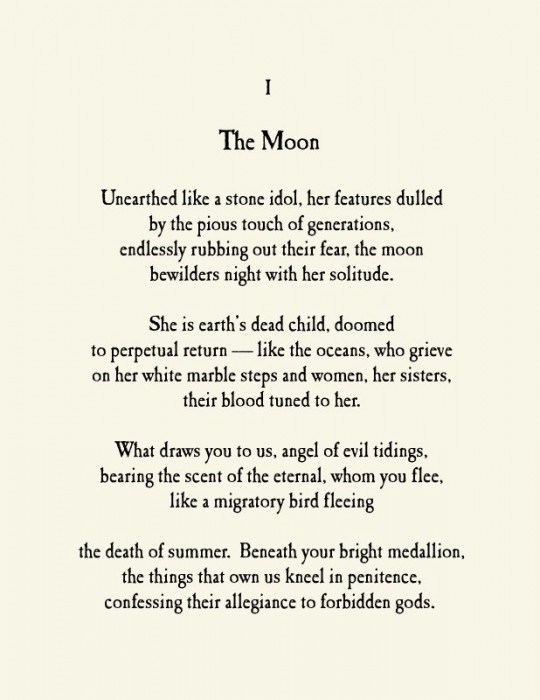 Bill Fletcher Jr.
Bill Fletcher Jr.
 Carl Davidson
Carl Davidson
I am sure that most of you are aware that General Petraeus, Obama’s CIA Director, got caught with his pants down when it was revealed in November that he was having an affair with Paula Broadwell, his fawning biographer.
But for my money the real scandal was his incestuous relationship with Fred and Kimberly Kagan, a couple of neoconservative warhawks, who served as his unpaid advisers when he was running the counterinsurgency program in Afghanistan before assuming the CIA post.
The Washington Post’s ace reporter Rajiv Chandrasekaran delivered the goods in a December 19 article:
Frederick and Kimberly Kagan, a husband-and-wife team of hawkish military analysts, put their jobs at influential Washington think tanks on hold for almost a year to work for Gen. David H. Petraeus when he was the top U.S. commander in Afghanistan. Provided desks, e-mail accounts and top-level security clearances in Kabul, they pored through classified intelligence reports, participated in senior-level strategy sessions and probed the assessments of field officers in order to advise Petraeus about how to fight the war differently.
The Defense Department permits independent analysts to observe combat operations, but the practice became far more common when Petraeus became the top commander in Iraq. He has said that conversations with outside specialists helped to shape his strategic thinking.
The take-home benefit was equally significant: When the opinion makers returned home, they inevitably wrote op-eds, gave speeches and testified before Congress, generally imparting a favorable message about progress under Petraeus, all of which helped him sell the war effort and expand his popularity.
Other commanders soon caught on. By the time the Kagans arrived in Kabul in June 2010, it was commonplace for think-tankers and big-name columnists to make seven-to-10-day visits once or twice a year. Two analysts from the Council on Foreign Relations, Max Boot and Stephen Biddle, were in Afghanistan at the same time at the invitation of Petraeus.
If you are at all familiar with the foreign policy bogeymen feared most by Democratic Party liberals, the name Max Boot should leap off the page. With a name like Boot, how could it be otherwise? He was one of the loudest boosters of Bush’s occupation of Iraq and openly defends America’s right to rule the old through old-fashioned imperialist gunboat policies.
In 2010 General Petraeus received the Irving Kristol Prize from the American Enterprise Institute, the neocon think-tank that provided a roost for the Kagans. In his acceptance speech, he tipped his hat to them:
One recent AEI effort, of course, stands out in particular. In the fall of 2006, AEI scholars helped develop the concept for what came to be known as “the surge.” Fred and Kim Kagan and their team, which included retired General Jack Keane, prepared a report that made the case for additional troops in Iraq. As all here know, it became one of those rare think tank products that had a truly strategic impact.
Petraeus also made sure to pay homage to the ultrarightist in whose name the award is given:
But while Irving Kristol may be gone, his influence will be felt for generations to come. He was, of course, one of our Nation’s foremost thinkers on a host of topics, from economics and religion to social welfare and foreign policy. He was a man of staggering intellect who possessed a view of human nature and American politics that has, in many respects, stood the test of time.
Kristol, of course, was one of the prime architects of the Reagan revolution that all our good liberals keep urging us to root out, primarily through the mechanism of pulling the lever for Barack Obama, the same guy who has uttered these memorable words:
I don’t want to present myself as some sort of singular figure. I think part of what’s different are the times…I think Ronald Reagan changed the trajectory of America in a way that Richard Nixon did not and in a way that Bill Clinton did not. He put us on a fundamentally different path because the country was ready for it. I think they felt like with all the excesses of the 1960s and 1970s and government had grown and grown but there wasn’t much sense of accountability in terms of how it was operating. I think people, he just tapped into what people were already feeling, which was we want clarity we want optimism, we want a return to that sense of dynamism and entrepreneurship that had been missing.
Yeah, who wants those “excesses” of the 1960s? All that stuff about peace, love and understanding. Least of all someone like Barack Obama who hires a guy like David Petraeus for the same reason that George W. Bush did, namely to keep the restless natives at bay.
If Petraeus has a soft spot in his heart for Fred and Kimberly Kagan, it is only natural that the president would connect with Robert Kagan, Fred’s brother. As I reported last February, Obama was carrying around Robert Kagan’s new book “The World America Made” like a security blanket. Unlike the frothing at the mouth Tea Party types, Fred Kagan, Robert Kagan, and like-minded rightists are more than willing to work with a Democratic Party president who madman Dinesh D’Souza accused of plotting to transform America into a socialist republic by 2016. Robert Kagan reminded Foreign Policy readers back in March 2010 that shrewder neocons saw a consistency with the Bush administration:
Unnoticed amid the sniping in Washington over health care and the wailing about “broken government,” a broad and durable bipartisan consensus has begun falling into place in one unlikely area: foreign policy. Consider the fact that on Afghanistan, Iraq, and Iran — the most difficult, expensive, and potentially dangerous foreign challenges facing the United States — precious little now separates Barack Obama from most Republican leaders in and out of Congress.
That “broad and durable bipartisan consensus” amounts to bombing the shit out of anybody who is unlucky enough to get included in the President’s latest hit list.
Obama’s clear ambition is to cement a relationship with “reasonable” people like the Kagans. It must be deeply frustrating to him that despite the amicable bipartisan relationship between Alan Simpson, a Republican, and the Democrat Erskine Bowles there has been so little progress on the domestic front. Can’t the Republicans understand that it is worth some rich bastard getting by on $35 million per year rather than $40 million in exchange for the people at the bottom getting an equivalent cut in Social Security and Medicare?
Last January Obama said the following in his State of the Union Address:
To put us on solid ground, we should also find a bipartisan solution to strengthen Social Security for future generations. We must do it without putting at risk current retirees, the most vulnerable, or people with disabilities; without slashing benefits for future generations; and without subjecting Americans’ guaranteed retirement income to the whims of the stock market.
The latest news, of course, is that SS payments will be slashed if Obama can get enough Republicans to vote for a package that uses a “chained” Consumer Price Index to calculate benefits. One of the first to sniff out the con game that would be put forward by the White House was Dean Baker who explained to Counterpunch readers what was at stake last July:
The justification for the change in the benefit formula is that the CCPI takes account of the substitutions that consumers make in response to changing prices. The classic story is that if the price of beef rises and the price of chicken doesn’t, people will buy more chicken and less beef. The CCPI takes this switching from beef to chicken into account in calculating inflation. The current CPI does not.
While there is an argument for taking account of this sort of substitution in the index, there are two important issues that arise when evaluating the cost of living of seniors. First, their consumption patterns differ substantially from the rest of the population. They consume more health care and fewer computers.
Some economists project expenditures to be reduced by $250 billion over a ten-year period if a chained CPI is adopted. In his latest budget Obama proposed spending about $5.8 trillion for the military over the next decade. That would account for roughly 11% of total federal spending in 2022. That’s just the ticket for a realigned Democratic Party that combines DLC types like Obama and the “reasonable” Republicans who would vote for guns rather than butter as long as they understood that the larger interests of the one percent were being served.
If you want to see where the country is going, all you need to do is look at Europe. France’s Socialist president is considering an all out attack on the social safety net according to a plan worked out by a member of the big bourgeoisie:
New York Times December 19, 2012
Challenging France to Do Business Differently
By LIZ ALDERMAN
PARIS — Louis Gallois, one of France’s most influential industrialists, knew he was about to make waves for the country’s Socialist president.
It was late October, and President François Hollande, faced with an alarming deterioration in the economy, had turned to Mr. Gallois for advice on how to put corporate France on a more competitive footing with the rest of Europe.
Mr. Gallois didn’t sugar-coat the message. His report called for a “competitiveness shock” that would require politicians to curb the “cult of regulation” he said was choking business in France.
The report said that unless France relaxed its notoriously rigid labor market, the country would continue on an industrial decline that had destroyed more than 750,000 jobs in a decade and helped shrink France’s share of exports to the European Union to 9.3 percent, from 12.7 percent, during that period. The report also called for cuts to a broad range of business taxes used to pay for big government and France’s expensive social safety net.
When people like Bill O’Reilly and Dinesh D’Souza warn about Obama taking the U.S. down the road to European style socialism, they obviously are on to something.
So how is it that people keep expressing a preference for not touching “entitlements” and we end up with a chained CPI despite Obama’s promises that benefits will not be cut? I guess I wised up after my one and only vote for a Democrat back in 1964 when I was assured that if Goldwater were elected we’d end up in a ground war in Vietnam. From that point on, I was open to the idea that Debs was right when he said that it was better to vote for what you want and not get it then to vote for what you don’t want and get it.
Apparently for two well-known “Marxist” supporters of Obama, the question of what you want is not that important. On August 9th, they argued that the elections were going to be a referendum:
To assume that the November elections are a moment to display our antipathy toward empire, moreover, misses entirely what is unfolding. This is not a referendum on the “America of Empire”: it is a referendum pitting the “America of Popular Democracy”—the progressive majority representing the changing demographics of the US and the increasing demands for broad equality and economic relief, especially the unemployed and the elderly—against the forces of unfettered neoliberalism and far right irrationalism.
In a sense this is right. The 1964 election was a referendum of sorts on the war in Vietnam. People voted for LBJ and got escalation. In the 2012 election people voted against “unfettered neoliberalism and far right irrationalism” and got a CIA Director who is honored with the Irving Kristol Prize from the American Enterprise Institute, and a chained CPI.
The problem with the “referendum” strategy is that it fails to recognize its non-binding character. Does anybody seriously think that because Obama said he was opposed to cuts in Social Security that he would be bound to keep his promise? Those speeches are not worth the paper they are written on.
On August 30, 1999, the people of East Timor had a referendum on whether to become a Special Autonomous Region within Indonesia, or for independence. Around 79% of voters opted for independence. In that very same year President Chavez of Venezuela put forward a referendum allowing for a new constitution as well as providing for recall referendums of elected officials as long as a minimum percentage of voters signed a petition. In the Venezuelan recall referendum of 2004 voters determined whether or not Chávez should be recalled from office. The result of the referendum was to not recall Chávez.
Those are real referendums. What Fletcher and Davidson are talking about has more to do with opinion polls. Like going to a polling station, going behind a curtain, and pulling a lever for whether you believe in capitalism or not. Let’s put it this way. Capitalism will not be eliminated through such atomized and nonbinding behavior. In fact, one of the main purposes of such exercises is to help stabilize the system by giving people the illusion that their vote makes a difference.
All in all, pulling the lever on election day in the U.S. for Obama in the hopes that he will not adopt “neoliberal excesses” is as vain as pushing the close button in many elevators. The elevator doors are actually timed to close according to a preset interval, such as 15 seconds. We are invited to press the close button anyhow since this gives the anxious passenger the feeling that things are moving forward.

 Bill Fletcher Jr.
Bill Fletcher Jr. Carl Davidson
Carl Davidson










